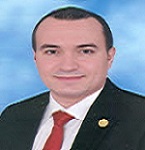Mathematical Finance






Section Collection Information
Mathematical Finance, also known as quantitative finance and financial mathematics, is a field of applied mathematics, concerned with mathematical modeling of financial markets. In general, there exist two separate branches of finance that require advanced quantitative techniques: derivatives pricing on the one hand, and risk and portfolio management on the other. Mathematical finance overlaps heavily with the fields of computational finance and financial engineering. The latter focuses on applications and modeling, often by help of stochastic asset models, while the former focuses, in addition to analysis, on building tools of implementation for the models. Also related is quantitative investing, which relies on statistical and numerical models (and lately machine learning) as opposed to traditional fundamental analysis when managing portfolios.
Mathematical Finance Sections seeks to publish original research articles focused on the development and application of novel mathematical and statistical methods for the analysis of financial problems. This section aims to serve as a forum for mathematical scientists, financial practitioners and financial economists.
The section welcomes contributions on new statistical methods for the analysis of financial problems. Empirical results will be appropriate to the extent that they illustrate a statistical technique, validate a model or provide insight into a financial problem. The section also welcome contributions focused on the development and analysis of novel computational methods relevant to applications in finance. The use of numerical experiments is encouraged.










